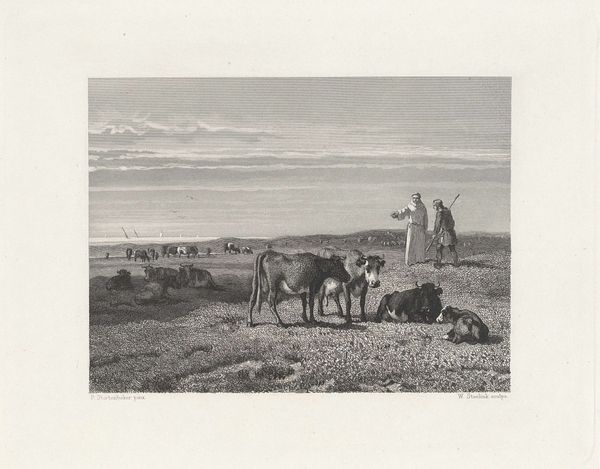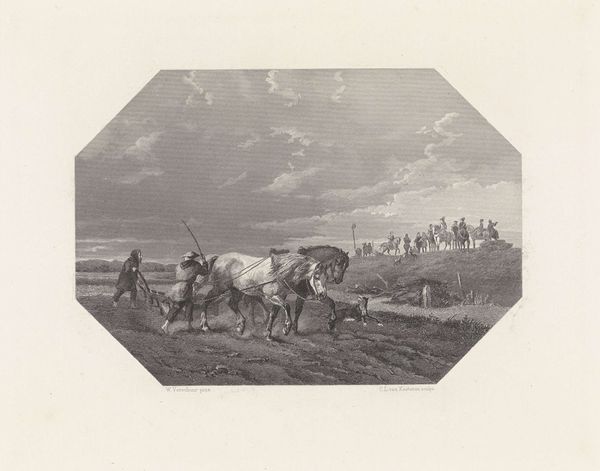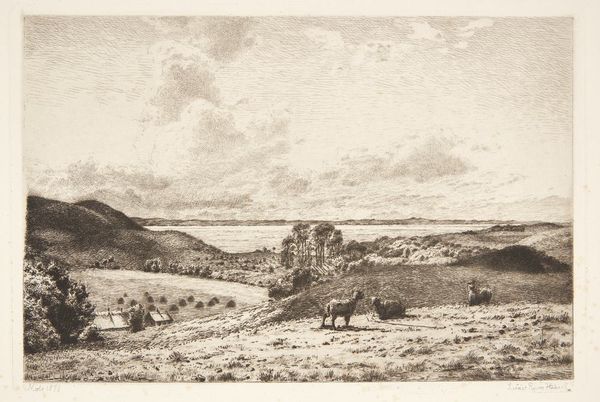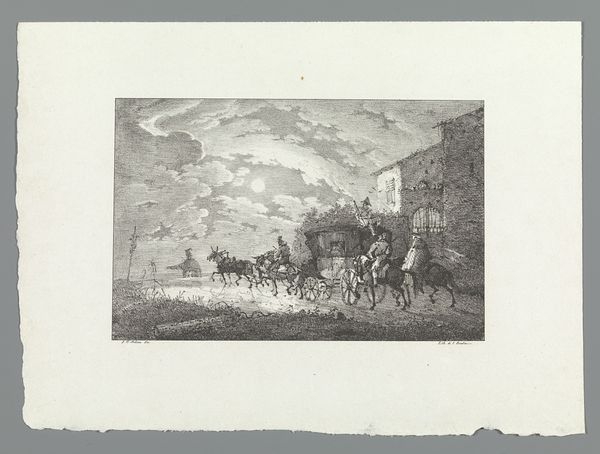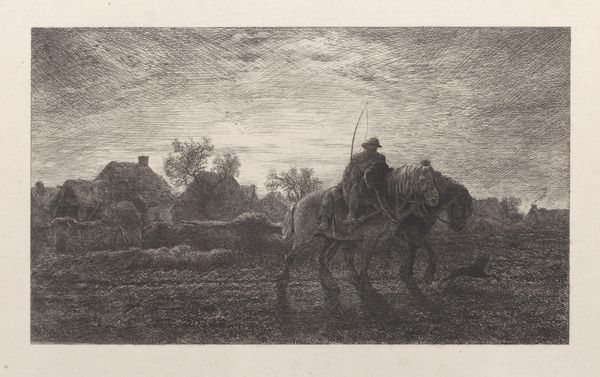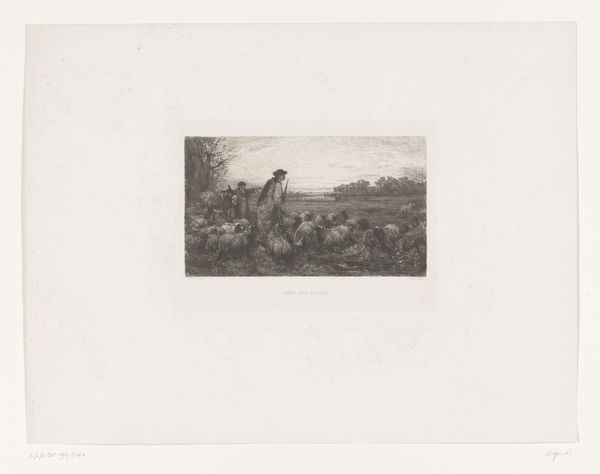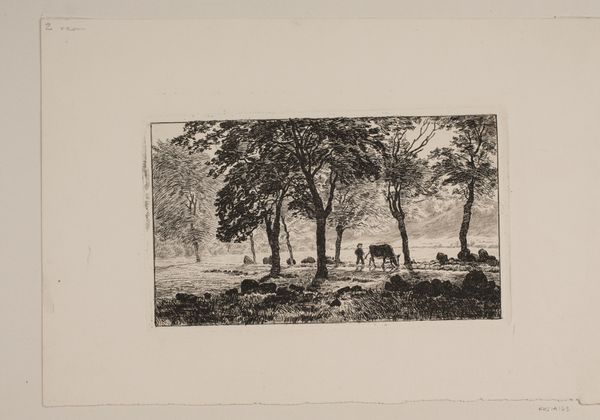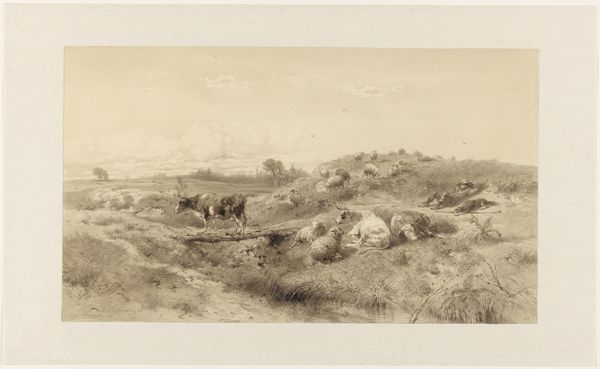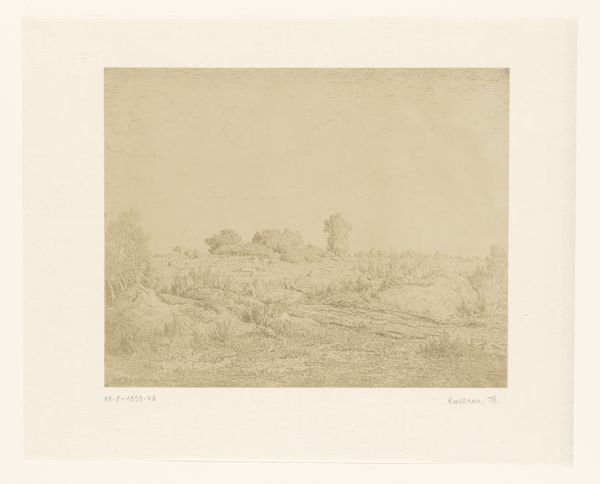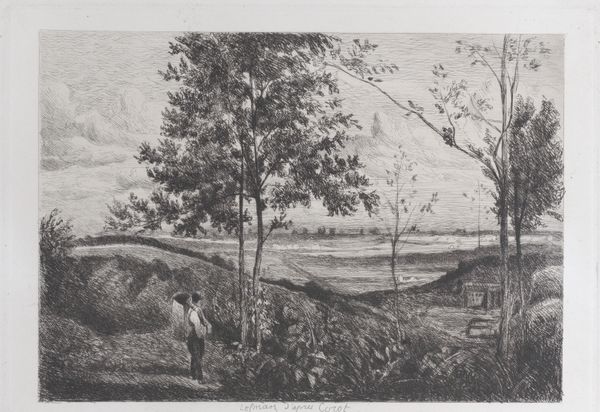
print, etching, engraving
#
negative space
# print
#
etching
#
landscape
#
genre-painting
#
engraving
#
realism
Dimensions: height 183 mm, width 238 mm
Copyright: Rijks Museum: Open Domain
Hendrik Sluyter created this print, Saksische landhoeve in de 5e eeuw, using etching, a process that democratized image making during the late 19th century. Here, a copper or zinc plate would have been coated with a waxy, acid-resistant substance called 'ground,' upon which the artist scratched an image. The plate was then immersed in acid, biting away at the exposed lines, before being inked and printed. Look closely at the image and you'll see the result of these distinct lines. Compared to painting, printmaking allowed for wide distribution, and this etching exemplifies the detailed realism popularized by the Hague School. The depiction of labor on the Saxon farm is central to understanding the artwork. By focusing on the daily life of a fifth-century farm, Sluyter invites us to consider the intrinsic value and dignity of labor, reminding us of the importance of recognizing the value and skills involved in craft and agricultural practices.
Comments
No comments
Be the first to comment and join the conversation on the ultimate creative platform.

